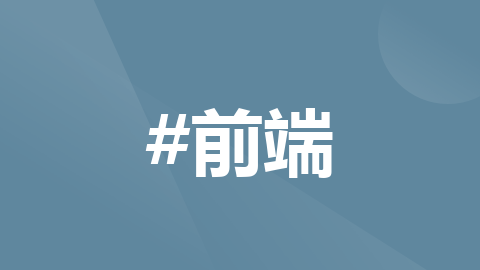
Vue 中实现点击 进入F11全屏
一.浏览器方法
浏览器自带全屏方法 document.documentElement.requestFullscreen(),和退出全屏方法document.exitFullscreen(),判断是否全屏document.fullscreenElement如果不是全屏返回null。
1.document.fullscreenElement()
只读属性document.fullscreenElement 返回当前页面中以全屏模式呈现的 Element,如果当前页面未使用全屏模式,则返回 null。
尽管这个属性是只读的,但如果修改它,即使在严格模式下也不会抛出错误;它的 setter 方法是空操作将被忽略。
2. document.documentElement.requestFullscreen()
document.documentElement.requestFullscreen() 方法用于发出异步请求使元素进入全屏模式。
调用此 API 并不能保证元素一定能够进入全屏模式。如果元素被允许进入全屏幕模式,返回的Promise会 resolve,并且该元素会收到一个fullscreenchange事件,通知它已经进入全屏模式。如果全屏请求被拒绝,返回的 promise 会变成 rejected 并且该元素会收到一个fullscreenerror事件。如果该元素已经从原来的文档中分离,那么该文档将会收到这些事件。
3.document.exitFullscreen()
document.exitFullscreen()方法用于让当前文档退出全屏模式(原文表述不准确,详见备注)。调用这个方法会让文档回退到上一个调用Element.requestFullscreen()方法进入全屏模式之前的状态。
备注: 如果一个元素 A 在请求进去全屏模式之前,已经存在其他元素处于全屏状态,当这个元素 A 退出全屏模式之后,之前的元素仍然处于全屏状态。浏览器内部维护了一个全屏元素栈用于实现这个目的。
二.定义全屏按钮
1.引入Element Plus
(1)安装
# NPM
$ npm install element-plus --save
(2)引入
// main.ts
import { createApp } from 'vue'
import ElementPlus from 'element-plus'
import 'element-plus/dist/index.css'
import App from './App.vue'
const app = createApp(App)
app.use(ElementPlus)
app.mount('#app')(3)使用图标
# NPM
$ npm install @element-plus/icons-vue(4)注册图标
需要从 @element-plus/icons-vue 中导入所有图标并进行全局注册。
// main.ts
// 如果正在使用CDN引入,请删除下面一行。
import * as ElementPlusIconsVue from '@element-plus/icons-vue'
const app = createApp(App)
for (const [key, component] of Object.entries(ElementPlusIconsVue)) {
app.component(key, component)
}基础用法
<!-- 使用 el-icon 为 SVG 图标提供属性 -->
<template>
<div>
<el-icon :size="size" :color="color">
<Edit />
</el-icon>
<!-- 或者独立使用它,不从父级获取属性 -->
<Edit />
</div>
</template>2.定义全屏按钮
<div class="fullScreen">
<el-icon :size="25" color="#fff" @click="fullScreen">
<FullScreen />
</el-icon>
</div>3.定义执行的函数
const fullScreen = () => {
let full = document.fullscreenElement;
console.log(full);
if (!full) {
// document自带的全屏方法
document.documentElement.requestFullscreen();
} else {
// document自带的推出全屏方法
document.exitFullscreen();
}
};更多推荐
 已为社区贡献5条内容
已为社区贡献5条内容










所有评论(0)